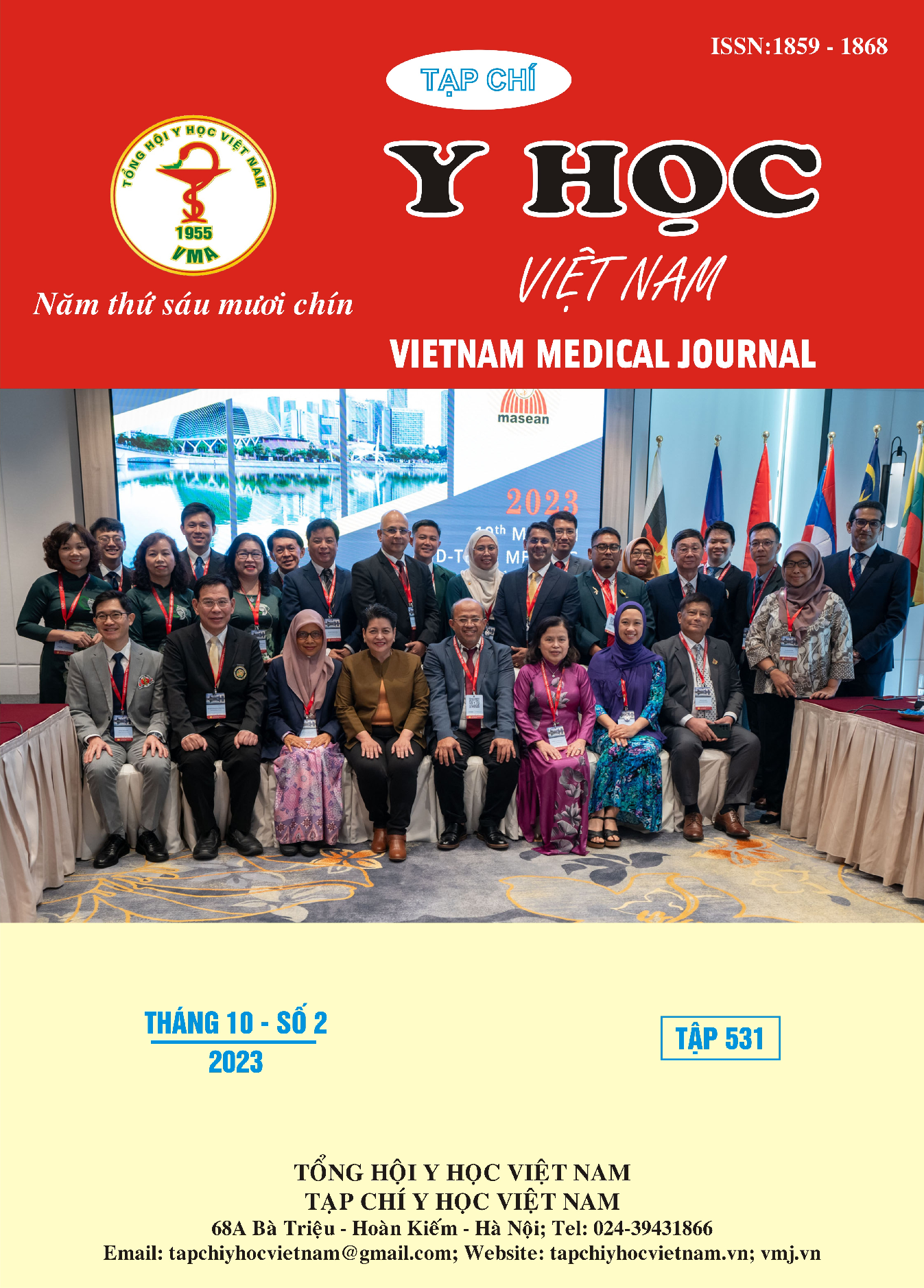EVALUATION OF KNOWLEDGE OF MEDICAL SOLID WASTE MANAGEMENT AT SOME MEDICAL STATIONS OF SOC SON DISTRICT HEALTH CENTER OF HA NOI CITY IN 2022
Main Article Content
Abstract
Objective: To describe the knowledge of medical solid waste management and identify some related factors of health workers at health stations of Soc Son District Health Center, Hanoi in 2022. Subjects and methodology: A cross-sectional descriptive study on the subject of all medical staff/workers working at 12 medical stations of Soc Son district health center. Results: 88.2% of health workers have been trained at least once on medical solid waste management; 84.3% have heard about Decision 43/2007/QD-BYT or Decision 58/2015/QD-BYT on regulations of medical solid waste management. The percentage of health workers with general knowledge accounted for 75.5%. In which, considering each stage in the process separately, knowledge about collection is almost absolute (95.1%), followed by knowledge about classification (92.2%), basic knowledge (66,7%), knowledge of handling and destruction (58.8%), knowledge of transportation and storage reached the lowest rate (31.4%). Significant factors related to the general knowledge of medical staff on solid waste management include training, professional expertise and gender. The results of multivariate analysis showed that the statistically significant related factors were gender and professional title, specifically, the group of female health workers had the correct knowledge 0.09 times that of the male group (p< 0.05) and the group of nurses, technicians, bachelors of public health and midwives had the correct knowledge 4.88 times higher than that of the group of doctors, pharmacists, and nurses (p<0.05). Conclusion: A large proportion of health workers at commune health stations have a general understanding of medical solid waste management, but knowledge about transportation and storage is still low, and training is needed.
Article Details
Keywords
medical waste management, commune health station.
References
2. Sở Y tế Hà Nội, “Hội nghị giao ban công tác quản lý chất thải y tế, bảo vệ môi trường,” 2018.
3. Đinh Quốc Tuấn, “Thực trạng quản lý chất thải rắn y tế và kiến thức, thực hành của cán bộ trạm y tế trên địa bàn Thành phố Việt Trì năm 2011,” Luận văn tốt nghiệp Thạc sĩ y tế công cộng, Trường Đại học Y tế công cộng, 2013.
4. Vũ Quốc Hải, “Thực trạng quản lý chất thải y tế, kiến thức về quản lý chất thải y tế của nhân viên trạm y tế xã tại huyện Lương Sơn, tỉnh Hòa Bình năm 2004,” Luận văn thạc sĩ y tế công cộng, Trường Đại học Y tế công cộng, 2005.
5. Nguyễn Hữu Hùng, “Xử lý chất thải y tế vẫn là gánh nặng cho ngân sách bệnh viện,” Tại: http://vihema.gov.vn/xu-ly-chat-thai-y-te-van-la-ganh-nang-cho-ngan-sach-benh-vien.html (truy cập ngày)., 2015.
6. Lê Thị Hoàn, Lê Vũ Thuý Hương, Chu Văn Thăng, “KIẾN THỨC VỀ QUẢN LÝ CHẤT THẢI RẮN CỦA NHÂN VIÊN Y TẾ TẠI BA BỆNH VIỆN TẠI HÀ NỘI NĂM 2018,” Viện Đào tạo YHDP và YTCC, Trường Đại học Y Hà Nội, 2018.
7. Tô Thị Liên, “Thực trạng quản lý chất thải rắn y tế tại một số trạm y tế xã, phường thuộc 8 tỉnh Việt Nam năm 2015,” 2015.
8. Đặng Thị Thu Ngà, “Thực trạng và kiến thức, thực hành Của nhân viên y tế về quản lý chất thải rắn y tế tại tuyến xã huyện Vũ Thư tỉnh Thái Bình,” 2017.
9. Nguyễn Thị Hoài, “Thực trạng quản lý chất thải rắn y tế và kiến thức, thực hành của nhân viên y tế bệnh viện đa khoa Đan Phượng, Hà Nội năm 2014, Thạc sĩ, Trường Đại học Y tế công cộng,” 2014.
10. Nguyễn Bá Tòng, “Thực trạng quản lý chất thải rắn y tế tại các trạm y tế thuộc huyện Châu Thành, Đồng Tháp năm 2015, Luận văn tốt nghiệp Thạc sĩ, Trường Đại học Y tế công cộng,” 2015.


